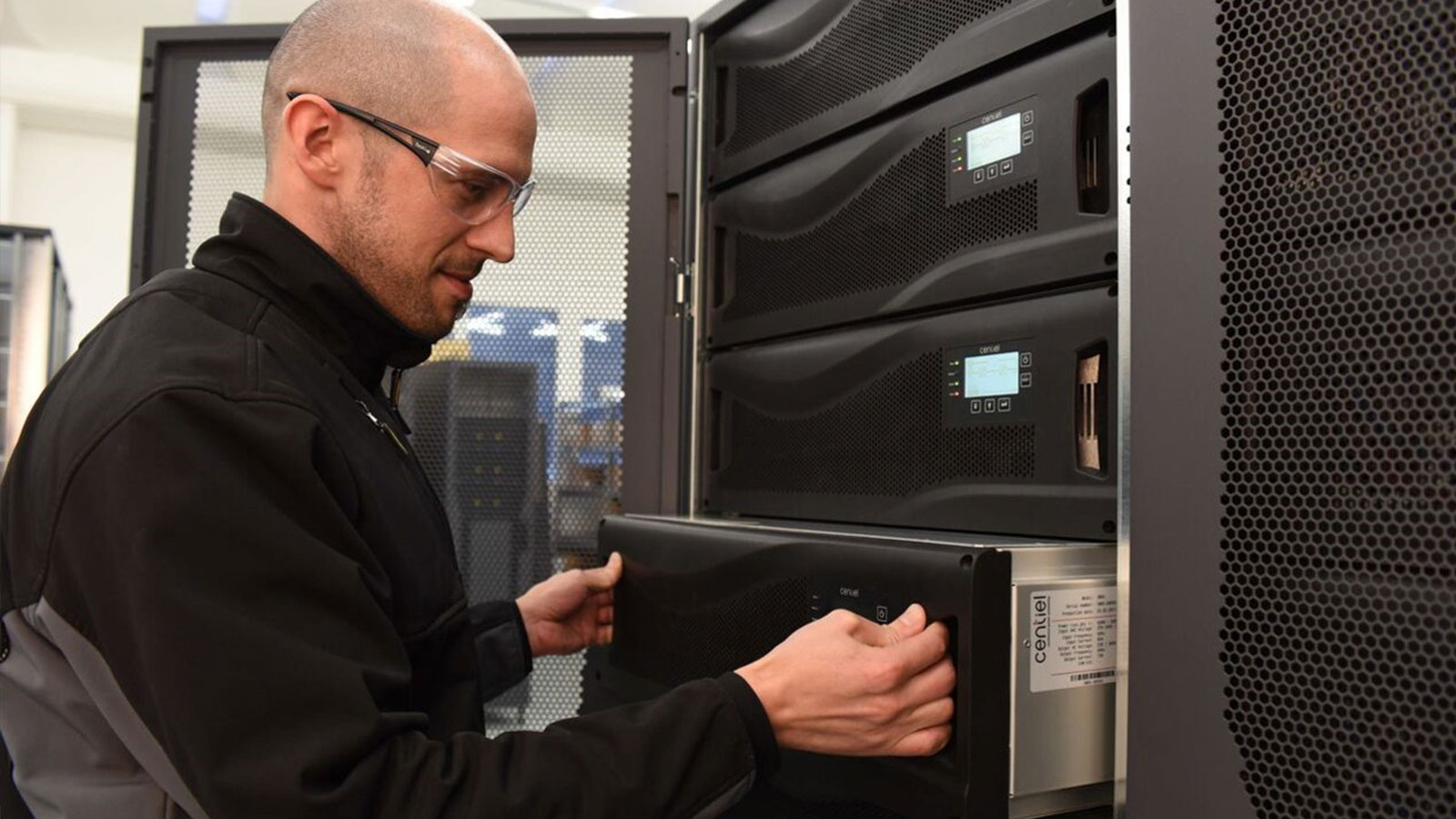Louis McGarry, Sales and Marketing Director, Centiel UK, offers some top tips on how to ensure your uninterruptible power supply is running efficiently.
UPS systems are known for protecting critical loads in data centres. However, power protection is essential throughout most sectors. Examples can range from medical to banking and finance to defence applications.
Whatever the use, if a UPS is ageing and/or incorrectly sized, they can literally be ‘power hungry beasts’. UPS and their associated infrastructure consume energy and the running costs alone can add up to hundreds of thousands of pounds over the years for some organisations.
A system working at its optimum efficiency will ensure it is cost effective and the impact on the environment will also be minimised with a reduction in power consumption. With energy costs at an all time high, now is the perfect opportunity to re-evaluate and review assets to reimagine and re-manage UPS installations to maximise efficiency.
The importance of right-sizing your UPS
The biggest step change with iPhones was between the iPhone 8 and 10. Screen size and processing speed was improved dramatically, and facial recognition added. We may not see enhancements on this scale again. It’s the same with UPS technology.
In reality it is unlikely that a UPS will ever be 100% efficient, and with today’s technology offering <3% of losses, any enhancements will be minor. We have already reached the iPhone 10 stage. So, to continue to make advances in efficiency we need to consider other aspects of the whole set up.
The vast majority of UPS installations we are called to evaluate are oversized. There are many reasons for this, including the need at the time of installation to ‘spend all the budget’. It could also be that the client wants to avoid the risk of under sizing, they may be asked to add headroom. This headroom can be anything from an additional 10-50% ‘just in case’.
Have you ever looked into how much energy an oversized UPS can waste? It is standard practice for my team to compare the running costs of oversized, legacy systems with a replacement right-sized UPS. The total cost of ownership calculations can be impressive. Regularly I see new systems paying for themselves within three years through energy savings alone.
The key point to evaluating the efficiency of any existing UPS is to look at the loading. Below 25% load, a UPS is less efficient. Even with no load, a UPS consumes energy simply to stay on, so it pays to run a UPS at the sweet spot of its efficiency curve. This can vary between systems, but this information should always be made available by the manufacturer.
Is it better to repair a legacy UPS, or to replace?
Legacy kit will obviously be less efficient than a correctly-sized new UPS. However, the cost of energy used to power a legacy UPS over five years is actually huge. It is generally more than the cost of a new system.
We are making TCO calculations on a daily basis to help clients understand how much they will save from day one, at what point in time the new system will have paid for itself, and the ongoing savings over the longer term.
Making these calculations and choosing to replace legacy systems could save thousands of pounds on running costs, not to mention the associated benefits of increased availability of deploying true modular UPS technology.
Do the battery banks also need right-sizing?
It is important to consider right-sizing the entire UPS system. That includes its associated battery bank. Larger battery banks will demand more energy from the grid to trickle charge and recharge, so be careful not to over size or overspend on batteries that you don’t need.
Another consideration when re-evaluating batteries is their location in relation to the UPS and other heat sources. Lead-acid batteries need to be kept at 200°C to optimise design life.
Separating the batteries in a dedicated room, away from the UPS, means only the area housing the batteries needs environmental consideration. The batteries can now operate in an ambient room temperature, which on average is between 20-22°C, needing very little or even zero environmental control. That’s another cost saving.
Why modular UPS systems can help you with future changes
Don’t ever buy more UPS equipment than you need to. I’ll repeat that: don’t ever buy more UPS equipment than you need to. Whether that’s batteries or UPS.
That may sound strange coming from a UPS manufacturer. However, our goal is to optimise system design and minimise the energy required to run the system for the best outcome for our clients.
The ‘what if’ question frequently comes up. What if the load changes? What if demand increases or decreases and the UPS system we’ve purchased becomes overloaded? The answer is that true modular technology is designed for a pay-as-you-grow approach, simply adding (or removing) more UPS modules ensures consistent rightsizing. This is achieved by ensuring there is sufficient physical infrastructure, or racks, to accommodate the changing nature of the organisation.
For clients to buy into this concept, UPS providers must work with clients to help them understand the facts and figures.
So, instead of saying ‘we need a like-for-like UPS replacement’, the question to ask is: ‘what is my actual load and do we really need a UPS that big? By looking at the alternatives, right sizing and managing room layout, it is possible to minimise energy and running costs and tame the power-hungry beast.


